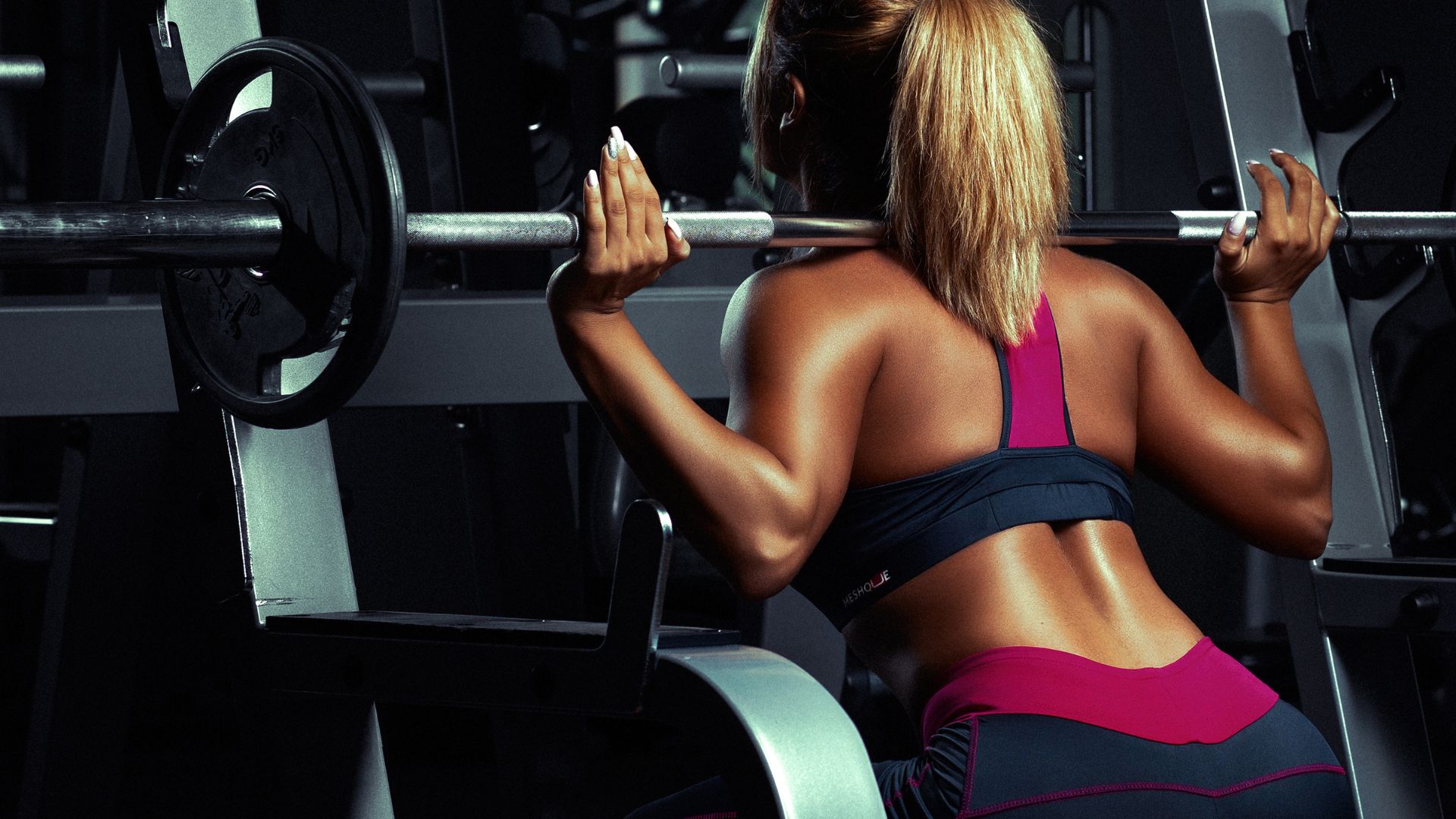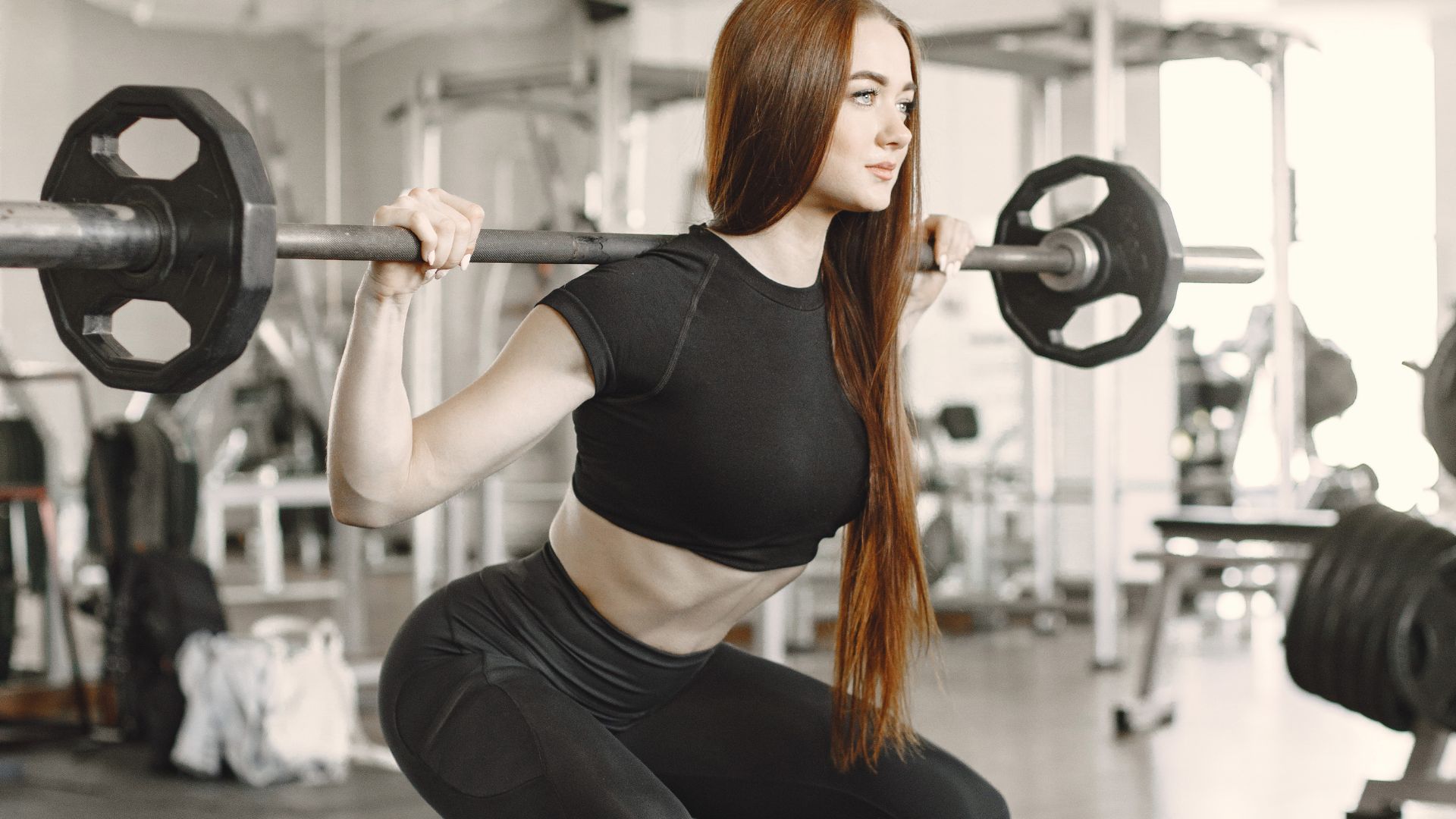If you’re into weightlifting, then you know that squats are one of the best exercises for building lower body strength.
But if you weigh 220 pounds, you may be wondering how much you should be able to squat. In this article, we’ll explore everything you need to know about how much you should be able to squat if you weigh 220 pounds.
The amount you should squat depends on various factors such as your fitness level, experience with squats, and goals. However, as a general guideline, if you weigh 220 pounds, you should aim to squat at least your body weight or more.
For beginners, it’s recommended to start with bodyweight squats or with a weight that is comfortable for you. As you become more experienced and stronger, you can gradually increase the weight you squat.
It’s also important to focus on proper form and technique when squatting to avoid injury and get the most benefit from the exercise. Consider seeking guidance from a qualified trainer or coach to help you develop good form and a safe and effective squatting routine.
It depends on your fitness level and experience.
If you’re wondering how much you should be squatting and you weigh 220 pounds, there’s no one-size-fits-all answer.
It depends on a few things like your fitness level, how much experience you have with squats, and what your specific goals are.
But as a general rule of thumb, if you weigh 220 pounds, it’s a good goal to aim to squat at least your body weight or more.
Of course, if you’re just starting out with squats or you’re not feeling very strong yet, you might want to start with bodyweight squats or a lighter weight that feels comfortable for you.
As you get more experienced and stronger, you can gradually increase the weight you squat. Just remember that it’s important to focus on using proper form and technique to avoid injury and get the most benefit from the exercise.
If you’re not sure where to start or you want some guidance, consider working with a qualified trainer or coach to help you develop a safe and effective squatting routine.
here is a chart table summarizing what to consider when determining how much you should be squatting:
| Factors to Consider | Why It’s Important | What to Consider |
|---|---|---|
| Fitness Level | Determines your current strength and ability to handle weight | Consider if you are a beginner or have been consistently working out |
| Experience with Squats | Proper form and technique is crucial for safety and effectiveness | Consider if you have previous experience with squats or if you are new to the exercise |
| Specific Goals | Determines how much weight you need to lift to achieve your desired outcome | Consider if your goal is to build strength, increase muscle mass, or improve overall fitness |
| Bodyweight | A good starting point for determining how much weight to lift | Consider aiming to squat at least your body weight or more |
Remember that everyone’s capabilities and goals are different, so it’s important to tailor your squatting routine to your individual needs. If you’re unsure where to start, consider working with a qualified trainer or coach to develop a personalized plan that will help you reach your goals safely and effectively.

Start with a weight that is comfortable for you.
If you’re just starting out with squats, it’s a good idea to begin with bodyweight squats or a weight that feels comfortable for you. This can help you get used to the movement and build up your strength gradually.
As you become more experienced and stronger, you can start to increase the weight you squat.
This will help you continue to challenge yourself and build more muscle and strength. Just remember to take it slow and not try to lift too much weight too quickly, as this can increase your risk of injury.
It’s also important to focus on using proper form and technique when squatting.
This means keeping your back straight, your knees aligned with your toes, and lowering yourself down until your thighs are parallel to the ground.
If you’re not sure how to do this, consider working with a qualified trainer or coach to help you learn the proper technique.
Overall, squats can be a great exercise for building lower body strength and muscle, but it’s important to start slowly and focus on proper form to avoid injury and get the most benefit from the exercise.
here’s an example tabular schedule for a beginner’s squatting routine:
| Week | Warm-Up | Sets x Reps | Weight | Rest Between Sets | Cool-Down |
|---|---|---|---|---|---|
| 1-2 | 5-10 mins light cardio | 2 x 10 | Bodyweight | 1-2 mins | 5-10 mins stretching |
| 3-4 | 5-10 mins light cardio | 3 x 10 | Light (e.g. barbell, dumbbells) | 1-2 mins | 5-10 mins stretching |
| 5-6 | 5-10 mins light cardio | 3-4 x 8-10 | Moderate | 1-2 mins | 5-10 mins stretching |
Note: This is just an example routine and can be adjusted to fit your individual needs and goals. It’s also important to listen to your body and take rest days as needed. If you’re unsure how to properly perform squats, consider working with a qualified trainer or coach for guidance.
Focus on proper form and technique first.
When it comes to doing squats, it’s really important to use proper form and technique. This can help you avoid injury and get the most benefit from the exercise.
If you’re not sure how to do squats correctly, it’s a good idea to seek guidance from a qualified trainer or coach.
They can help you learn the proper technique and develop a safe and effective squatting routine that’s tailored to your specific needs and fitness level.
In general, when doing squats, it’s important to keep your back straight, your knees aligned with your toes, and to lower yourself down until your thighs are parallel to the ground.
This can help you target your lower body muscles effectively and get the most benefit from the exercise.
While squats can be a great exercise for building strength and muscle, it’s important to take it slow, focus on proper form, and seek guidance from a professional if you’re not sure how to do them correctly.
here’s an example of a proper form tabular for squats:
| Squat Form Checklist |
|---|
| Feet shoulder-width apart |
| Toes pointing slightly outwards |
| Chest up, shoulders back |
| Core engaged |
| Hips hinge back |
| Knees bend, tracking over toes |
| Thighs parallel to the ground |
| Knees extend |
| Hips return to the starting position |
| Repeat for desired number of repetitions |
Remember to always focus on using proper form and technique when doing squats to avoid injury and get the most benefit from the exercise. If you’re not sure how to do them correctly, consider seeking guidance from a qualified trainer or coach.
Here is the tabular schedule example for a proper squatting routine:
| Day | Exercise | Sets x Reps | Weight |
|---|---|---|---|
| 1 | Bodyweight Squats | 3×10 | Bodyweight |
| 1 | Barbell Back Squats | 4×8-10 | Gradually increase |
| 1 | Bulgarian Split Squats | 3×10 (each leg) | Dumbbells or barbell |
| 2 | Front Squats | 4×8-10 | Gradually increase |
| 2 | Single-Leg Squats | 3×10 (each leg) | Bodyweight or dumbbells |
| 2 | Box Squats | 3×12 | Gradually increase |
| 3 | Goblet Squats | 3×12 | Dumbbell or kettlebell |
| 3 | Lunges | 3×10 (each leg) | Bodyweight or dumbbells |
| 3 | Leg Press | 3×12 | Gradually increase |
| 4 | Sumo Squats | 3×12 | Dumbbell or barbell |
| 4 | Step-Ups | 3×10 (each leg) | Dumbbells or barbell |
| 4 | Hack Squat | 3×12 | Gradually increase |
Remember to warm up with some light cardio and dynamic stretches before starting your squatting routine, and to cool down with some static stretches and foam rolling after each workout. Also, gradually increase the weight or reps as your strength and experience improve.
here’s a tabular summary of the information:
| Weight | Squat Amount |
|---|---|
| 220 lbs | Body weight or more (depending on fitness level and goals) |
| Beginner | Bodyweight squats or weight that feels comfortable |
| Experienced | Gradually increase weight as you get stronger |
| Proper Form | Keep back straight, knees aligned with toes, thighs parallel to ground |
| Guidance | Seek guidance from a qualified trainer or coach for proper form and technique |
Conclusion
In conclusion, the amount of weight you should squat if you weigh 220 pounds depends on several factors such as your fitness level, experience with squats, and goals.
As a general guideline, it’s recommended to aim for at least your body weight or more as you become more experienced and stronger.
For beginners, it’s best to start with bodyweight squats or a weight that feels comfortable for you. It’s important to focus on proper form and technique to avoid injury and get the most benefit from the exercise.
Seeking guidance from a qualified trainer or coach can help you learn the correct technique and develop a safe and effective squatting routine.
Overall, squats can be a great exercise for building lower body strength and muscle, but it’s important to start slowly and focus on proper form to avoid injury and get the most benefit from the exercise.

Hey there, it’s Mike Rrsq, the Editor-in-Chief over at Jsquat.com, and I’m absolutely obsessed with all things squat fitness! I’ve been lucky enough to get some serious recognition for my work in this field. With a solid background in the fitness and wellness industry, I’ve been there right from the get-go, helping shape this website into what it is today.
You see, I’m not just the boss around here; I’m also a passionate contributor. I love sharing my insights through my articles, and trust me, they’re not your run-of-the-mill stuff. Each piece I write is a labor of love, filled with my expertise and real-world experience in the fitness universe. So, if you’re into fitness and looking for some inspiration, you’re in the right place!

